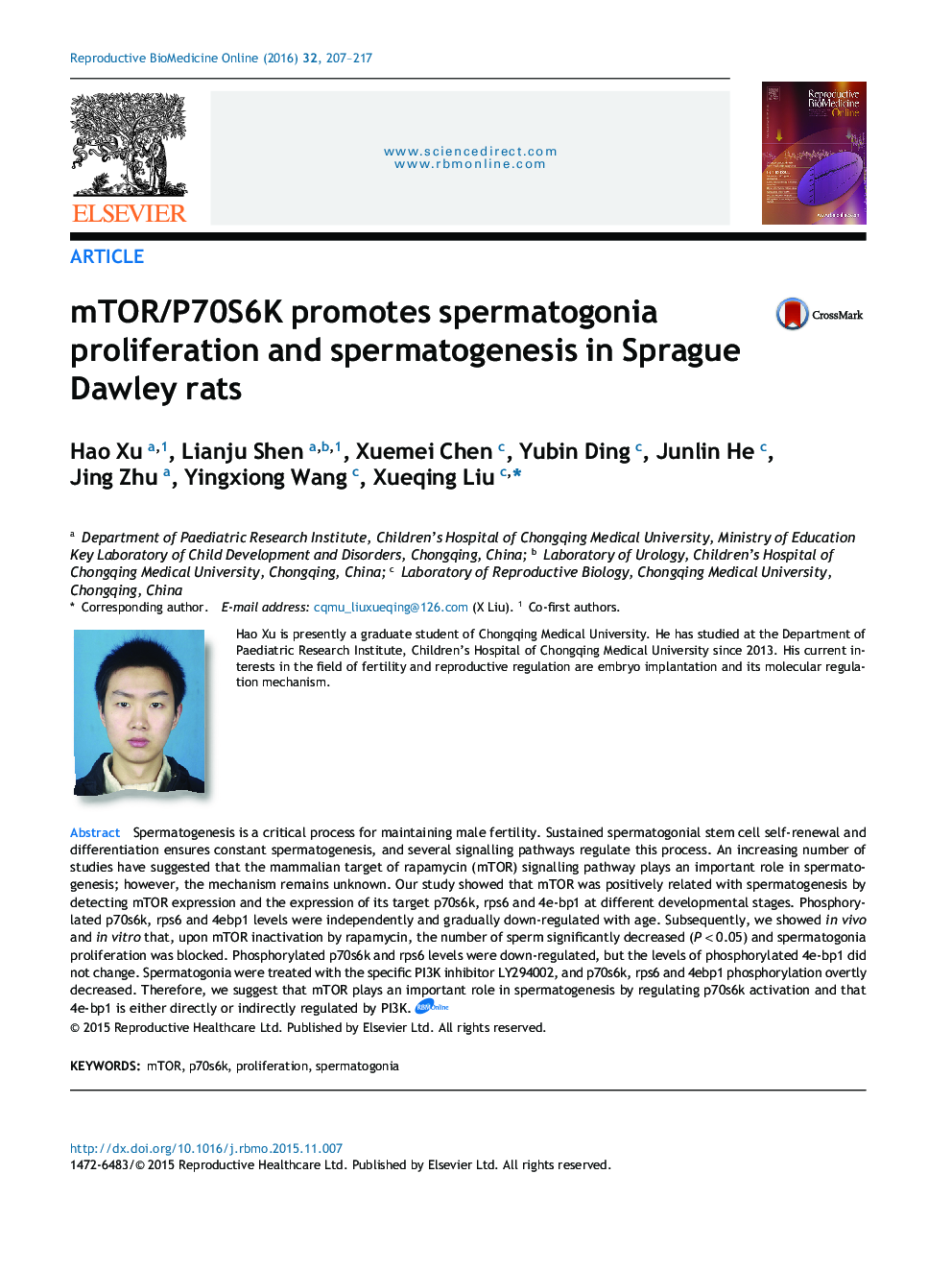| Article ID | Journal | Published Year | Pages | File Type |
|---|---|---|---|---|
| 6188636 | Reproductive BioMedicine Online | 2016 | 11 Pages |
Spermatogenesis is a critical process for maintaining male fertility. Sustained spermatogonial stem cell self-renewal and differentiation ensures constant spermatogenesis, and several signalling pathways regulate this process. An increasing number of studies have suggested that the mammalian target of rapamycin (mTOR) signalling pathway plays an important role in spermatogenesis; however, the mechanism remains unknown. Our study showed that mTOR was positively related with spermatogenesis by detecting mTOR expression and the expression of its target p70s6k, rps6 and 4e-bp1 at different developmental stages. Phosphorylated p70s6k, rps6 and 4ebp1 levels were independently and gradually down-regulated with age. Subsequently, we showed in vivo and in vitro that, upon mTOR inactivation by rapamycin, the number of sperm significantly decreased (P < 0.05) and spermatogonia proliferation was blocked. Phosphorylated p70s6k and rps6 levels were down-regulated, but the levels of phosphorylated 4e-bp1 did not change. Spermatogonia were treated with the specific PI3K inhibitor LY294002, and p70s6k, rps6 and 4ebp1 phosphorylation overtly decreased. Therefore, we suggest that mTOR plays an important role in spermatogenesis by regulating p70s6k activation and that 4e-bp1 is either directly or indirectly regulated by PI3K.
